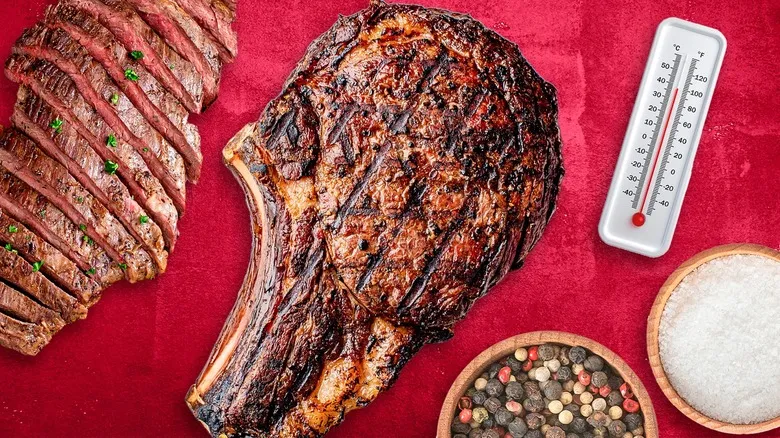1. Buying a steak without marbling
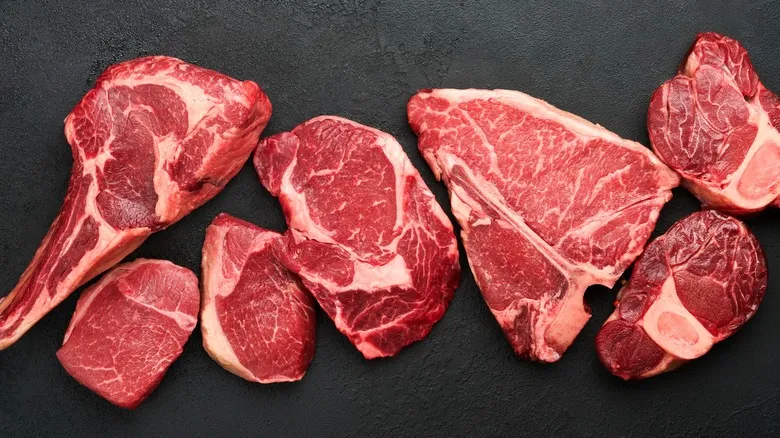
When grilling steak, selecting the right cut of meat is essential for achieving a delicious result that will leave your taste buds craving more. According to Andy Bowler, Executive Chef and Founder of Indulge Dining, there are four key factors to consider when choosing your steak: marbling, thickness, bones, and your personal preferences. One of the most significant aspects of an ideal grilling steak is its marbling.
Marbling refers to the white streaks of fat interspersed within the muscle of red meat. "Marbling enhances flavor, and as it cooks, it melts, contributing to the steak's tenderness," Bowler explains. His preferred cut is ribeye, as it is typically well-marbled with an excellent balance of fat and meat, resulting in optimal juiciness and tenderness.
It's important to remember that your cooking method for rendering fat may differ based on the cut of meat you choose. If you select a steak with a layer of fat on one side, begin grilling with that side down to help melt the fat into the meat.
2. Choosing a thin steak

After marbling, it's important to consider the thickness of your steak when searching for the ideal cut to grill. One of the highlights of a high-quality grilled steak is the ability to tailor the cooking process to your liking, which requires a substantial thickness.
"You want steaks that are at least 1.5 inches thick to achieve a proper cook, because without that, it’s either fully cooked or not at all," said Andy Bowler. A steak with good thickness allows for better control over how deeply the heat penetrates the meat, enabling you to cook it to perfection every time, as long as you keep an eye on your meat thermometer.
Opting for a thicker steak also allows you to achieve a nice sear on the outside with minimal risk of overcooking the interior. Searing your steak enhances its flavor, and to accomplish this, you need to allow enough time for it to make contact with the grill surface to initiate the Maillard reaction. With a thick steak, you’ll end up with a beautifully browned exterior and a tender, juicy center.
3. Grilling a boneless steak

Bones are packed with rich flavor, which is why stews and stocks made from them have such a robust taste. According to Andy Bowler, cooking steak with the bone enhances its flavor. During the cooking process, the bone marrow, which is full of savory umami, seeps into the meat, resulting in a more delicious final dish. If you don’t mind bones and are looking for a mouthwatering, juicy grilled steak, opting for a bone-in cut is a smart choice.
If you prefer your meat without bones, there's no need to feel like you're missing out on great steak. Ultimately, it’s all about personal taste. Whether you enjoy your grilled steak boneless or favor lean cuts without marbling, there’s no right or wrong, and the ideal steak is the one that suits your preferences. The key is to select high-quality meat. "Purchase the best steak you can afford," advised Bowler.
4. Cooking straight from the fridge

One of the most frequent errors when grilling steak is taking it directly from the fridge to the grill. The issue is that cold steak cooks unevenly, resulting in a gray band in the center when you slice into it, rather than a lovely, gradual color transition. Additionally, cooking steak straight from the fridge won't yield a tender result. The abrupt temperature shift causes the meat fibers to tighten, leading to a tougher texture. "Essentially, when you place cold meat on the grill, the heat can't penetrate the steak," explained Andy Bowler. "It just encounters a cold barrier, preventing it from reaching the meat."
Bowler recommends letting your steak sit out of the fridge for at least 45 minutes before grilling. While this may seem like an unnecessary step in a complicated recipe, consider it an opportunity rather than a hassle. This waiting period is also the perfect time to season or marinate the meat, allowing it to fully absorb the flavors.
5. Cross contaminating the meat
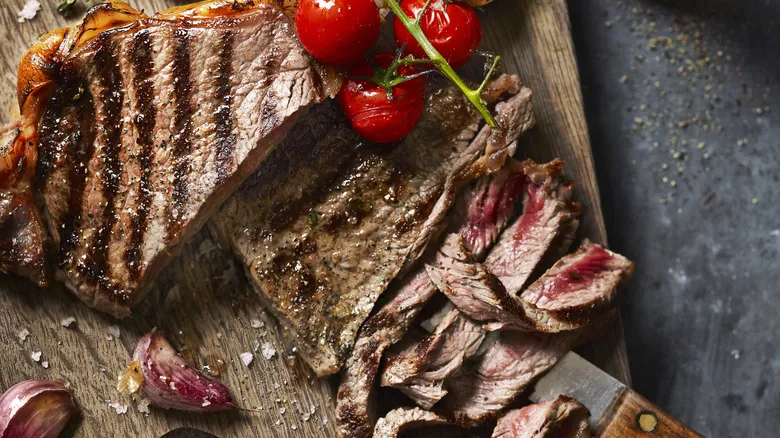
Cooking and preparation are not the only elements that can spoil your grilled steak. Regardless of personal taste, nothing can ruin a meal quite like food poisoning. Undercooked or raw beef can contain dangerous bacteria such as salmonella and E. coli, which may lead to stomach issues lasting up to a week after consumption. Additionally, if other foods in your kitchen come into contact with raw beef or its juices, they can also become contaminated.
Fortunately, preventing cross-contamination is straightforward—just keep meat separate. Utilizing specific utensils during preparation, like a separate cutting board for raw and rare meat, can significantly lower the risk of cross-contamination. It's also vital to sanitize tools and surfaces before and after use.
Properly handling the meat is just one aspect of avoiding cross-contamination; maintaining overall hygiene is equally important. Washing your hands before and after touching raw meat is essential, as is thoroughly cleaning your kitchen countertops once you're finished.
6. Storing your steak incorrectly
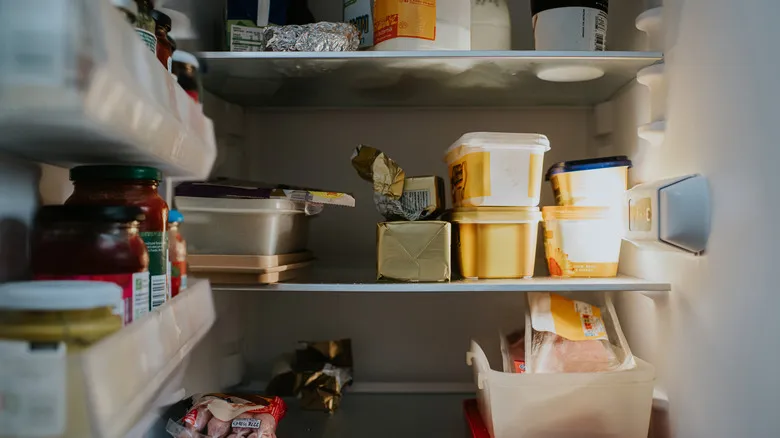
In addition to preventing cross-contamination, proper storage of your raw ingredients is crucial for ensuring steak safety. Make sure your refrigerator is set to the optimal temperature (ideally at or below 40°F) and place your steak in the appropriate section—away from fresh produce and dairy, ideally towards the bottom where it’s coldest.
According to the U.S. Food and Drug Administration, refrigeration is effective in inhibiting and slowing the growth of harmful bacteria on food. Therefore, it’s essential to minimize the time your steak spends outside the fridge.
Storing your steak in an airtight container or packaging will help keep out excess moisture, which reduces the risk of bacterial growth and maintains the quality of the meat. For the best quality and food safety, it’s advisable to use your steak within a few days. If you can’t do that, freezing is the best option for long-term storage.
7. Missing the right internal temperature
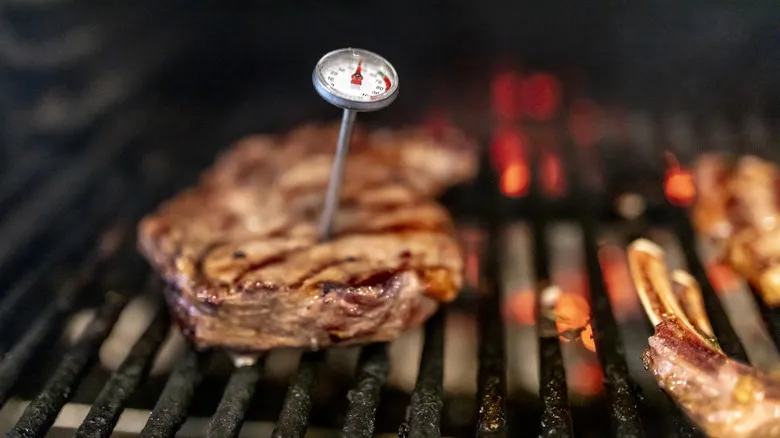
Whether you prefer your steak rare or well done, the ideal steak is all about your personal preference. Andy Bowler, who has extensive experience in Michelin-starred kitchens, recommends using a meat thermometer for achieving the perfect doneness. An accurate reading guarantees that your steak is cooked just right, making a reliable meat thermometer a worthwhile addition to your kitchen tools.
Understanding steak temperatures is essential for grilling the perfect steak. A rare steak typically has an internal temperature of around 125-130°F after resting; medium rare falls between 130-140°F; medium ranges from 140-150°F; medium-well is between 150-160°F; and well done exceeds 160°F.
To obtain an accurate measurement with your meat thermometer, insert the probe into the thickest part of the steak, avoiding any bones or fatty areas. Remember, don’t wait until your steak reaches your desired temperature while cooking—it will continue to cook as it rests. Instead, remove it from the grill when it is about 50°F below your target internal temperature.
8. Not pre-heating the grill
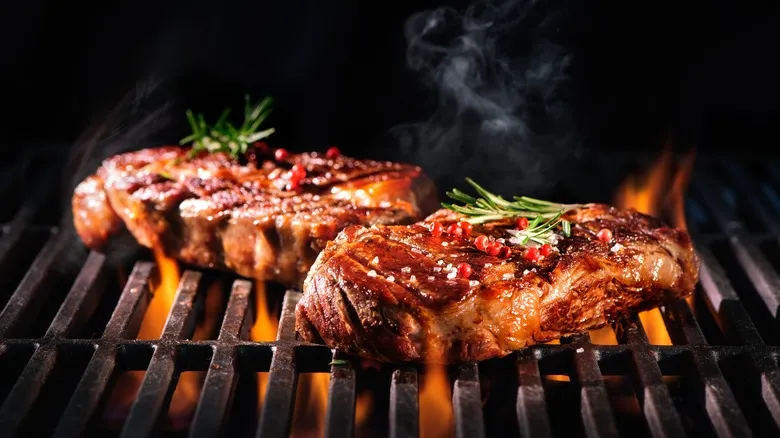
Preheating the grill is essential for achieving a high-quality grilled steak for several reasons. It ensures an even cook, prevents the meat from sticking, and allows for a proper sear. Caramelizing or browning your steak enhances its flavor, and you won't achieve that on a cold grill.
Grilling is most effective at high temperatures, and there's an easy way to check if your grill is sufficiently hot. Hold your hand about five inches above the grill surface and count — it should be too hot to keep your hand there for more than 2-4 seconds. If your grill has a built-in thermometer, the optimal cooking temperature ranges from 450-550°F.
Each grill is unique, and the method you use to heat it affects how long it takes to reach a suitable cooking temperature. Andy Bowler advises that if you're grilling with wood or charcoal, allow the grill a few hours to heat up, while a gas grill can be ready in about 25 minutes. However, since every grill varies, it may take some experimentation to determine how long yours needs to preheat.
9. Skipping the searing step
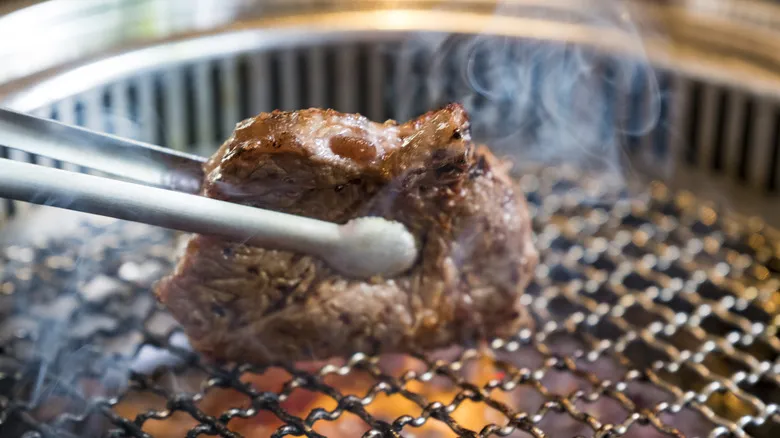
When it comes to caramelizing, you might not be searing your grilled steak long enough. "Don't hesitate to let it cook for a substantial amount of time before flipping it," advised Andy Bowler. Properly searing your steak leads to caramelization, which is essential for achieving both rich flavor and the perfect color—crucial elements for a restaurant-quality grilled steak. Don’t be afraid to sear it longer than you typically would. "Especially when using sea salt," Bowler noted. "You'll achieve a lovely crust, which is exactly what you're aiming for." A well-executed sear also results in those attractive grill marks on the meat.
If you're worried about over-caramelizing and your steak is turning a dark black instead of a rich brown, simply relocate it to a cooler section of the grill. Cooking over indirect heat after searing is an excellent method to continue cooking your steak to the desired internal temperature without exposing it to direct flames. This technique ensures a perfectly cooked center while maintaining a beautifully seared exterior.
10. Storing leftovers incorrectly
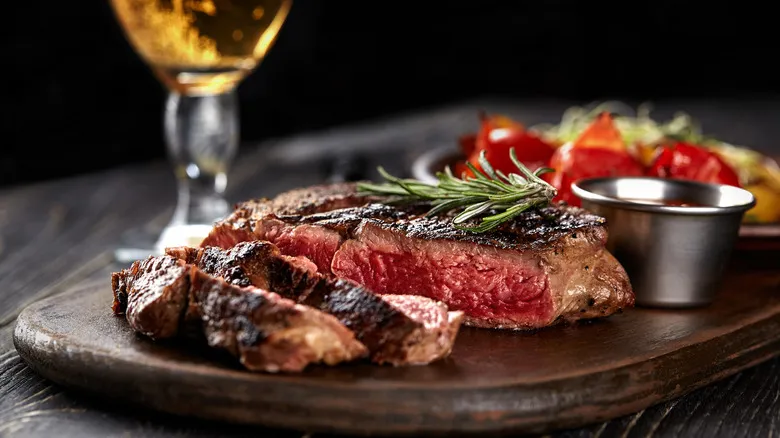
Grilled steak is a dish that is best enjoyed fresh, but if you have leftovers, it's essential to store them correctly. Proper storage of leftover steak is crucial for both food safety and maintaining its quality.
To ensure safety, cool your leftovers as quickly as possible. If the steak is left unrefrigerated, any bacteria present can survive and multiply. According to the FDA, perishable meats should not be left out at room temperature for more than two hours. When storing, place the steak in a sealed container and check for spoilage daily. Remember that contaminated food can still pose a risk even if it appears, smells, or tastes fine. As a general guideline, try to consume leftovers promptly, and make sure your refrigerator is set to 40°F or lower. If your leftovers have not been properly refrigerated at any time, it’s best to discard them.
11. Reheating it incorrectly
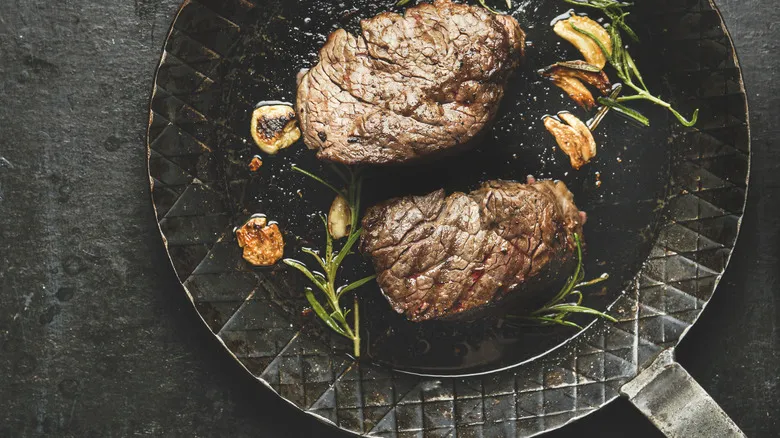
Nothing brightens your day quite like the thought of delicious leftovers waiting for you in the fridge, but reheating them can often lead to disappointment. If you're looking to warm up grilled steak while preserving its quality, Andy Bowler recommends using the oven or a skillet instead of the microwave.
Microwaves heat food from the inside out, which can compromise the beautiful pink center of your steak. In contrast, the oven and stovetop heat from the outside in, allowing you to better maintain the steak's interior when reheating. While reheating grilled steak will inevitably cook it a bit more, you can still prevent it from becoming overcooked.
Properly reheating grilled steak is also crucial for food safety. If leftover meat is only warmed up, it can reach a temperature that encourages bacterial growth. However, reheating it until it's hot will eliminate harmful bacteria. Keep in mind that refrigeration doesn't kill bacteria; it merely slows their growth, so it's essential to reheat food (especially meat) properly.
12. Cutting into your steak
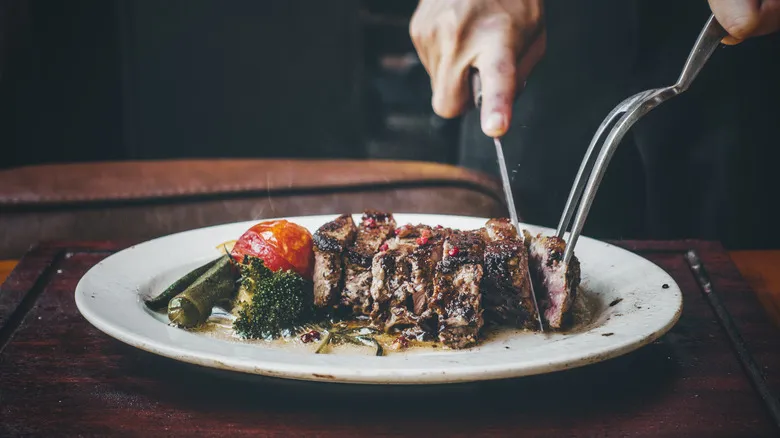
Slicing into your steak to check its doneness is acceptable when dining solo, but when hosting guests, serving cut-up steaks is not ideal. While this method may seem reliable for gauging how well your steak is cooked, it comes at a price. Cutting into a steak before it’s fully cooked or allowed to rest causes its juices to escape, leading to a drier and less tender result on your plate.
A meat thermometer is an excellent alternative, as it accurately indicates the level of doneness without compromising the integrity of the meat. Don’t be discouraged by the thought of purchasing a new kitchen tool—Andy Bowler suggests that you don’t need to invest in an expensive model. "Just find one that provides an accurate reading," he advises.
It’s crucial to understand the internal temperatures corresponding to different levels of doneness, and keep in mind that the meat continues to cook while it rests after being removed from the grill.
13. Not resting after grilling
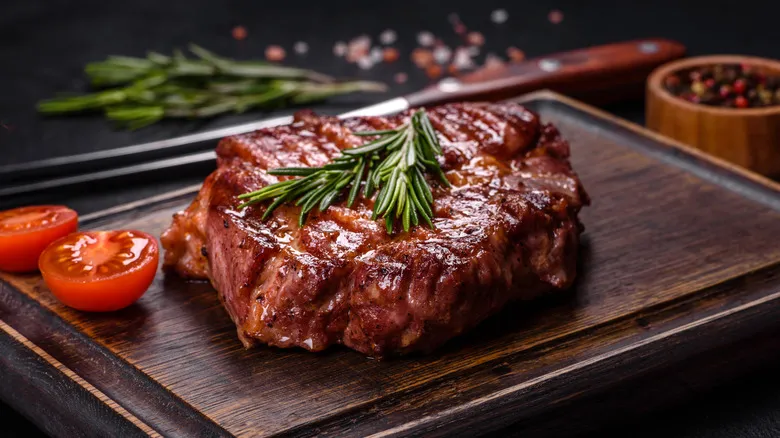
Not a fan of rare steak? Properly resting your grilled steak ensures you won't encounter an unappealing pool of pink liquid on your plate ever again. Resting meat after cooking simply involves allowing it to sit at room temperature for a while, enabling it to reabsorb its juices back into the muscle fibers. Skipping this crucial step results in excess liquid on your plate and an undercooked steak. "If you cut into the meat right away, it will be too rare because the heat needs time to continue penetrating the meat, which is essential for achieving a perfect doneness," explained Andy Bowler.
Make sure to rest your steak for the right amount of time—typically about as long as you cooked it—to ensure an even cook and maximum juiciness. While this may seem inconvenient, Bowler suggests incorporating the resting period into your meal preparation. For instance, you can work on your side dishes while the steak rests. If needed, you can always return the meat to the heat for a minute to warm it up after resting.
14. Not using enough seasoning
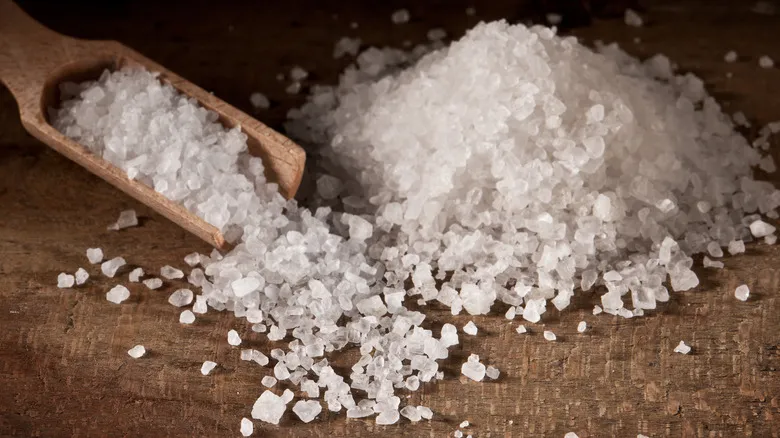
A well-grilled steak is always delicious, thanks to proper seasoning. If you want to create a restaurant-quality grilled steak at home, it's essential to season it correctly. This means using high-quality ingredients, starting with a good sea salt, as recommended by Andy Bowler. He emphasizes the importance of using freshly ground pepper, stating, "Avoid pre-ground pepper, as it tends to burn."
Resist the urge to get overly creative with flavors. Sticking to the classic combination of salt and pepper will enhance the steak's natural taste without overwhelming it. Once you've selected quality seasonings, be ready to use a generous amount. You might be surprised by how much salt is necessary for a flavorful steak. Bowler notes that approximately 60% of the seasoning is lost during grilling, and unlike other cooking methods, the seasoning that falls off is not recoverable. For the best flavor, don’t hold back on the salt—be liberal with it.
To properly season your steak, first coat it with oil to prevent sticking on the grill, then apply your seasoning evenly. Once that's done, you're all set to grill!
15. Thawing frozen steak

While it's generally preferable to cook steak at room temperature, using frozen steak can be a viable alternative if that's your only option. Thawing frozen meat can be a lengthy process, and it doesn't always guarantee a superior dish. Cooking from frozen may take more time, and it's advisable to use primarily indirect heat, but the outcome of using frozen meat can be better than simply thawed steak.
Frozen steak will understandably require a longer cooking time, but surprisingly, it browns almost as quickly as thawed steak, resulting in a much narrower band of overcooked gray meat. Additionally, frozen steak retains more moisture during cooking, leading to a juicier and more tender final product. This is because the muscle fibers in meat tend to contract and expel moisture when exposed to temperatures above 140°F. The frozen exterior helps to moderate the intense heat, minimizing water loss. Another advantage of cooking with frozen steak is that you can achieve a great sear without the risk of overcooking the center.
In the end, fresh is always the ideal choice, but if you forgot to take dinner out of the freezer in the morning, it might turn out to be a fortunate oversight.
Recommended

The NYC Coffee Tradition Worth Traveling For

Why Dunkin Donuts' Dunkalatte Was Discontinued

What Makes A Cold Foam Different From Steamed Milk?
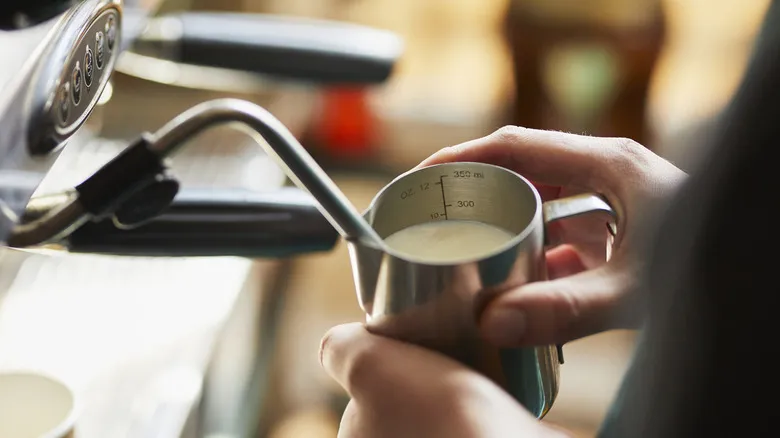
Can You Froth Non-Dairy Milks For Lattes And Cappuccinos?
Next up

